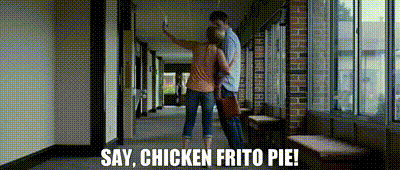Gone Girl
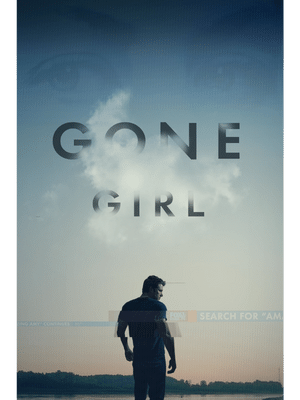
R, 2014, Drama/Thriller, 2h 49m
Table of Contents
What Is Gone Girl About?
A woman goes missing on her fifth wedding anniversary, leading to an investigation into her disappearance by her husband and the police.
Why You Should Watch Gone Girl
Gone Girl is a 2014 American psychological thriller film directed by David Fincher and adapted from the novel of the same name by Gillian Flynn. The film stars Ben Affleck as Nick Dunne, a man who becomes the prime suspect in the disappearance of his wife Amy, played by Rosamund Pike. The film also features Neil Patrick Harris, Tyler Perry, and Carrie Coon in supporting roles.
Gone Girl is a gripping and suspenseful tale that keeps audiences on the edge of their seats. The story follows Nick Dunne, a man who becomes the prime suspect in the disappearance of his wife, Amy. As the investigation unfolds, it becomes clear that Nick and Amy have a troubled marriage, and that Amy is not the perfect wife she appears to be. As the mystery deepens, the audience is drawn into the twisted mind of Amy, and the lengths she will go to in order to get what she wants.
The acting in Gone Girl is top-notch, with Ben Affleck and Rosamund Pike delivering standout performances. Affleck perfectly portrays the conflicted and troubled Nick, who must navigate the complexities of the investigation while dealing with his own guilt and self-doubt. Pike is equally impressive as Amy, imbuing her character with a chilling ruthlessness and cunning that keeps the audience guessing until the very end.
One of the film’s greatest strengths is its tight, well-paced storytelling. The plot is complex and twisty, but never feels convoluted or hard to follow. The film also expertly builds tension and suspense, keeping the audience on the edge of their seats throughout. The cinematography and direction are also top-notch, with Fincher expertly using the camera to create a tense and foreboding atmosphere.
Overall, Gone Girl is a tense and suspenseful thriller that keeps audiences guessing until the very end. The strong acting, tight storytelling, and expert direction make it a must-see for fans of the genre. While it is not without its flaws, Gone Girl is a well-crafted and engrossing film that is sure to keep audiences entertained.
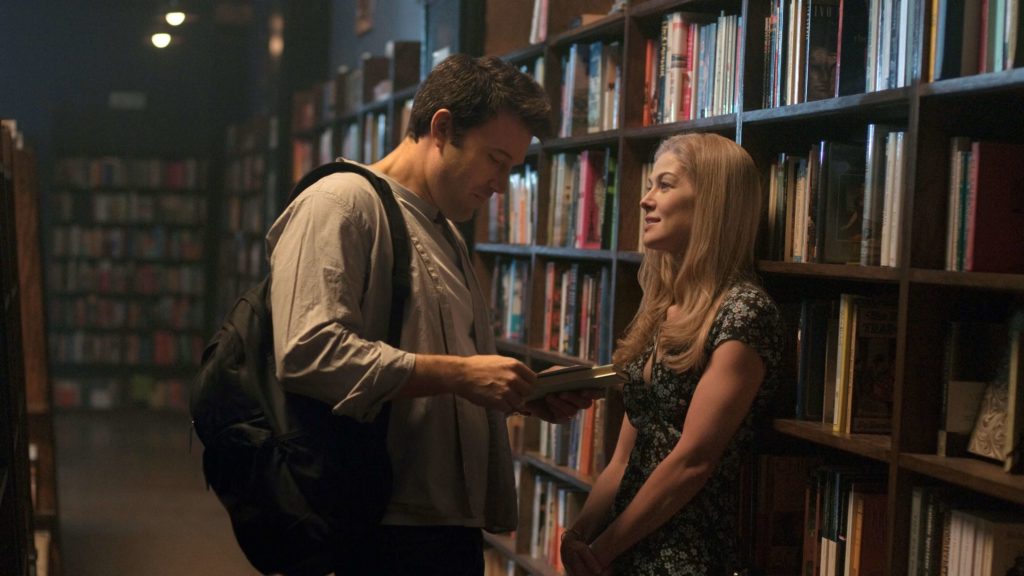
The Theme of Gone Girl
One of the most prominent themes in Gone Girl is the idea of how people present themselves to the world and the gap that can exist between one’s public and private persona. This is seen most clearly in the character of Amy Dunne, who initially appears to be a victim of her husband’s infidelity and abuse, but is later revealed to be a manipulative and calculating person who has carefully crafted her own narrative to suit her needs. By exploring the ways in which people construct their own identity, Gone Girl raises questions about the authenticity of the self and the extent to which we can ever truly know another person.
Gender roles and expectations are another important theme in the film. The characters of Nick and Amy Dunne represent two very different models of masculinity and femininity. Nick, with his laid-back and somewhat apathetic demeanor, embodies a certain kind of passive masculinity that is in contrast to the more assertive and dominant portrayal of masculinity often seen in movies. Amy, on the other hand, is a highly intelligent and calculating woman who uses her gender to her advantage in order to manipulate those around her. Through these characters, Gone Girl subverts traditional gender roles and challenges viewers to question their own assumptions about what it means to be male or female.
The theme of relationships is also central to Gone Girl. The film explores the complex dynamics of marriage and the ways in which people can become trapped in unhealthy relationships. Nick and Amy’s marriage, in particular, is characterized by a sense of mutual distrust and manipulation, with both characters trying to gain the upper hand in their relationship. By examining the darker side of marriage and relationships, Gone Girl raises important questions about the nature of love and the extent to which we can truly trust those closest to us.
Finally, Gone Girl touches on themes of media manipulation and public perception. The film’s portrayal of the media as a force that is willing to exploit tragedy and suffering for the sake of ratings and profit is a scathing critique of modern-day journalism. It also raises important questions about the extent to which the media can shape public opinion and influence the course of events.
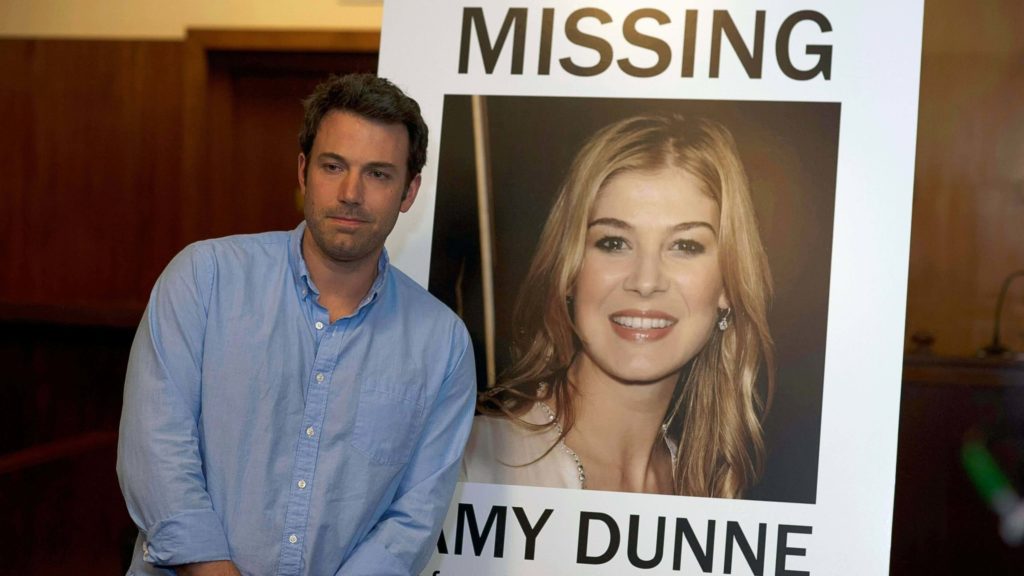
The Cinematography of Gone Girl
One of the most striking aspects of the film’s cinematography is its use of color grading to create a cool, desaturated look that emphasizes the bleakness and detachment of the story. This is particularly evident in the outdoor scenes, which are often shot in overcast or gray conditions that further reinforce the film’s somber mood.
In addition to its use of color, Gone Girl employs a number of visual techniques to convey the psychological state of its characters. The film’s use of framing, for example, often places characters off-center or partially obscured, emphasizing their isolation or sense of being trapped. The camera movement, too, is often slow and deliberate, emphasizing the tension and anxiety that pervades the story.
The movie employs a cool, desaturated look that emphasizes the bleakness and detachment of the story. This color palette is particularly evident in the outdoor scenes, which are often shot in overcast or gray conditions that further reinforce the film’s somber mood.
In addition to its use of color, Gone Girl uses framing and camera movement to convey the psychological state of its characters. The framing often places characters off-center or partially obscured, emphasizing their isolation or sense of being trapped. For example, in many of the scenes with Nick Dunne, the camera is often placed at a low angle, emphasizing his powerlessness and vulnerability in the face of the investigation into his wife’s disappearance.
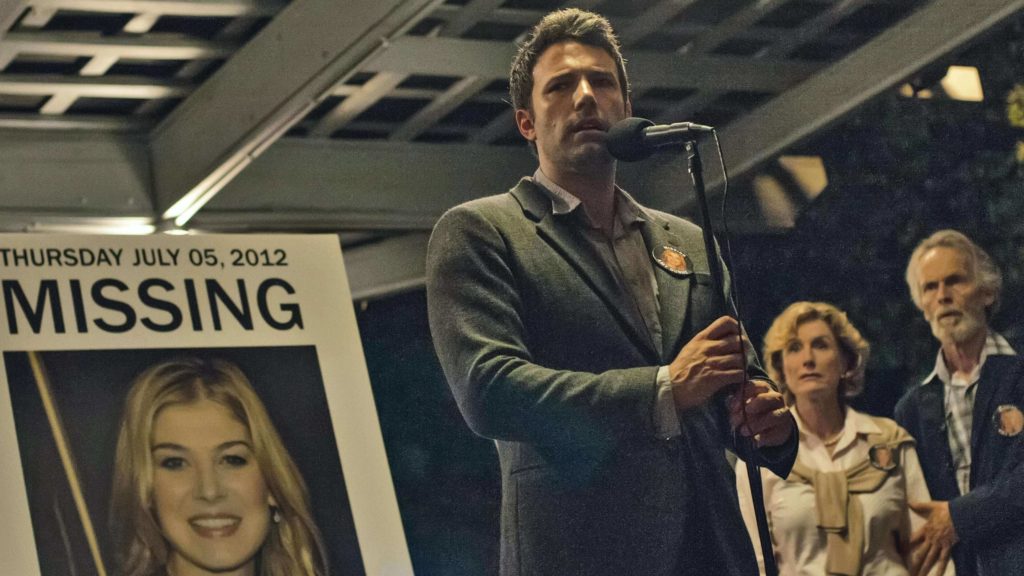
The Soundtrack of Gone Girl
The soundtrack to the 2014 thriller film Gone Girl was composed by the renowned musician Trent Reznor and his frequent collaborator Atticus Ross. Reznor is the frontman of the industrial rock band Nine Inch Nails, and Ross is a composer, producer, and musician.
The soundtrack features a mix of haunting and unsettling sounds, which perfectly complement the tense and suspenseful atmosphere of the film. The music is largely electronic and experimental in nature, with layers of distorted sounds, eerie synthesizers, and brooding rhythms.
One of the most memorable tracks from the soundtrack is the opening piece, “What Have We Done to Each Other?” which features a slow and foreboding piano melody that gradually builds in intensity. Other standout tracks include “Sugar Storm,” which features a pulsing, hypnotic beat and atmospheric synths, and “Consummation,” a track that features distorted, almost otherworldly vocals.
You can listen to the original motion picture soundtrack below.
The Cast of Gone Girl
- Ben Affleck as Nick Dunne – The husband of Amy Dunne who becomes the main suspect in her disappearance.
- Rosamund Pike as Amy Elliott Dunne – Nick’s wife, a former writer and the victim of a suspected crime.
- Neil Patrick Harris as Desi Collings – Amy’s ex-boyfriend who becomes a person of interest in her disappearance.
- Tyler Perry as Tanner Bolt – A high-profile defense attorney hired by Nick to help clear his name.
- Carrie Coon as Margo Dunne – Nick’s twin sister who supports him throughout the investigation.
- Kim Dickens as Detective Rhonda Boney – The lead investigator on the case.
- Patrick Fugit as Officer James Gilpin – A young officer who assists Detective Boney.
- David Clennon as Rand Elliott – Amy’s father, a wealthy author.
- Lisa Banes as Marybeth Elliott – Amy’s mother.
- Missi Pyle as Ellen Abbott – A talk show host who sympathizes with Amy’s story.

The Filmmakers of Gone Girl
- Director: David Fincher
- Screenplay Writer: Gillian Flynn (based on her novel of the same name)
- Producers: Leslie Dixon, Bruna Papandrea, Reese Witherspoon, Cean Chaffin
- Executive Producers: Joshua Donen, Arnon Milchan
- Cinematographer: Jeff Cronenweth
- Editor: Kirk Baxter
- Production Designer: Donald Graham Burt
- Costume Designer: Trish Summerville
- Music Composer: Trent Reznor and Atticus Ross

Chicken Frito Pie

Inspiration
“I’m gonna fix you up my world-famous chicken frito pie.” – Shawna
